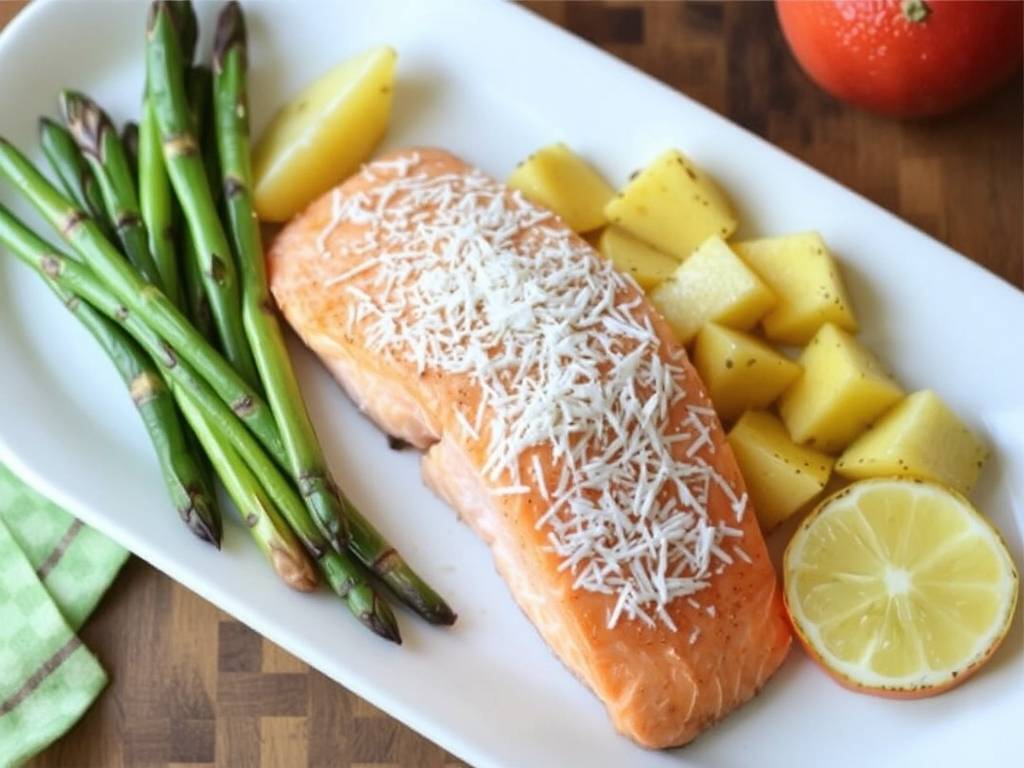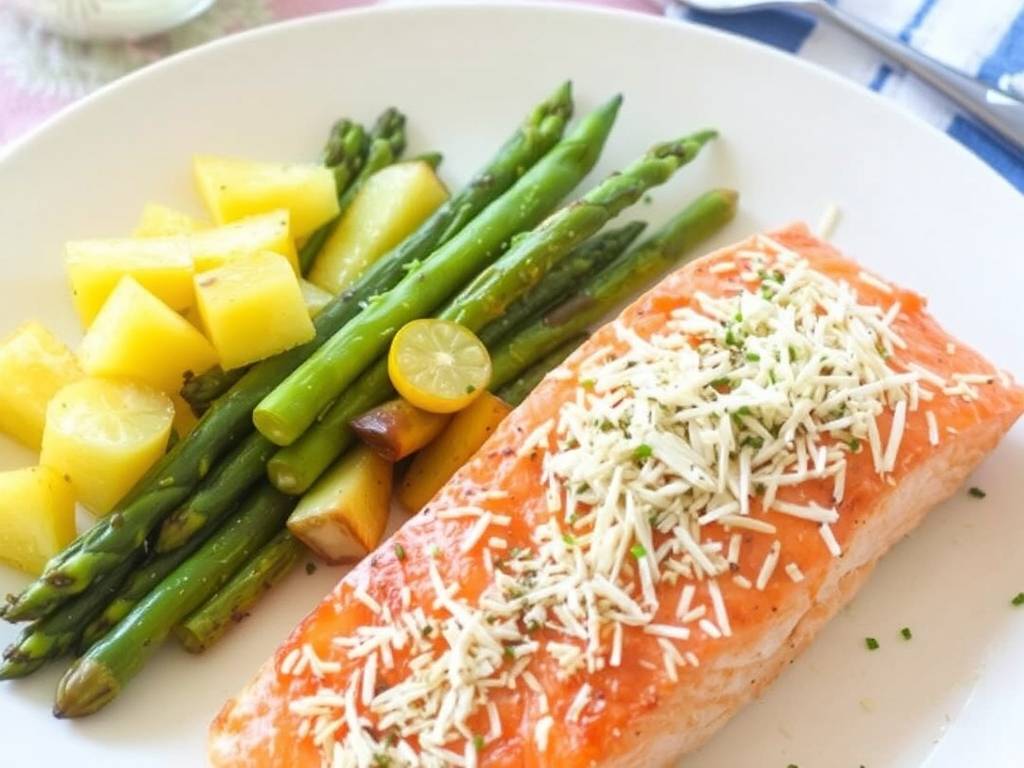Tropical Paradise Salmon: A Sweet and Savory Culinary Journey
There's something magical about the way sweet, tangy pineapple and rich, creamy coconut can transform a simple salmon fillet into an exotic culinary masterpiece. If you've ever wondered how to create a restaurant-quality dish that's both impressively delicious and surprisingly simple to prepare, you've come to the right place. This guide on how to bake salmon with pineapple and coconut will walk you through every step, unlocking the secrets to a perfectly moist, flavorful, and healthy meal that will transport your taste buds straight to a tropical beach.
Why This Flavor Combination Works Wonders

Before we dive into the recipe, let's talk about the star players. Salmon, a fatty fish rich in Omega-3s, has a robust flavor that stands up beautifully to bold ingredients. Pineapple doesn't just add sweetness; its natural acidity, thanks to an enzyme called bromelain, gently tenderizes the fish, allowing the flavors to penetrate deeply. Coconut, in its various forms—milk, cream, or flakes—adds a luxurious, creamy texture and a subtle nutty sweetness that balances the pineapple's tang. Together, they create a harmonious symphony of sweet, savory, and tropical notes that is simply irresistible. This easy baked salmon recipe is a perfect introduction to tropical seafood dishes.

Selecting Your Ingredients for the Best Results
The foundation of any great dish is quality ingredients. Here’s what to look for:
- The Salmon: For the best baked salmon with pineapple, opt for fresh, skin-on salmon fillets of even thickness. The skin helps keep the fillet intact and adds a lovely texture once crisped up. Look for fillets that are bright in color, firm to the touch, and have a fresh, oceanic smell. If using frozen, ensure it is fully thawed in the refrigerator overnight. This is a crucial step for perfectly moist baked salmon.
- The Pineapple: Fresh pineapple is ideal for the brightest flavor. Choose one that feels heavy for its size and has a sweet, fragrant smell at the base. Canned pineapple rings or chunks in 100% juice (not syrup) are a fantastic and convenient alternative, especially when fresh isn't available. We'll use the juice in our marinade, making this a great quick pineapple coconut salmon option.
- The Coconut: You have several options here, each offering a slightly different result. Full-fat coconut milk will give you a saucier, creamier base, while coconut cream is thicker and richer. Unsweetened shredded coconut can be toasted and used as a garnish for a delightful crunch. For an extra layer of flavor, consider a tablespoon of coconut oil.
Your Step-by-Step Guide to Baking Salmon with Pineapple and Coconut
Follow these detailed steps for a foolproof meal.
Step 1: Prepare the Marinade and Glaze This is where the magic begins. In a medium bowl, whisk together:
- 1/2 cup of coconut milk
- 2 tablespoons of pineapple juice (squeezed from fresh pineapple or from the can)
- 1 tablespoon of soy sauce or tamari (for a gluten-free option)
- 1 tablespoon of honey or maple syrup
- 1 minced garlic clove
- 1 teaspoon of freshly grated ginger
- A pinch of red pepper flakes for a subtle kick (optional)
This marinade doubles as a glaze, infusing the fish with flavor and creating a beautiful caramelized coating. This versatile pineapple coconut glaze for fish can also be used on chicken or shrimp.
Step 2: Marinate the Salmon Place your salmon fillets in a shallow dish or a resealable plastic bag. Pour about two-thirds of the marinade over the salmon, ensuring each piece is well-coated. Reserve the remaining third for basting and serving. Let the salmon marinate in the refrigerator for at least 20 minutes, but no longer than 45 minutes. Over-marinating can start to "cook" the fish due to the pineapple's acidity.
Step 3: Assemble the Dish for Baking Preheat your oven to 400°F (200°C). Lightly grease a baking dish with coconut oil or cooking spray. Arrange thin slices of fresh pineapple or your canned pineapple rings at the bottom of the dish. This creates a flavorful bed that steams the salmon from below, infusing it with sweetness and preventing it from sticking. Place the marinated salmon fillets, skin-side down, on top of the pineapple slices.
Step 4: Bake to Perfection Spoon a little of the reserved marinade over the top of each salmon fillet. Bake for 12-18 minutes, depending on the thickness of your fillets. The key to perfectly moist baked salmon is to avoid overcooking. Salmon is done when it flakes easily with a fork and the internal temperature reaches 145°F (63°C). About halfway through the baking time, baste the salmon with more of the reserved glaze to build up a gorgeous, sticky coating.
Step 5: The Final Touches While the salmon is baking, you can toast some unsweetened shredded coconut in a dry skillet over medium heat for 2-3 minutes until golden brown. Keep a close eye on it, as it can burn quickly. Once the salmon is out of the oven, let it rest for a couple of minutes. Garnish with the toasted coconut and freshly chopped cilantro or thinly sliced green onions. The contrast of the warm, flaky fish with the cool, crunchy coconut is a textural dream. Serve the remaining reserved glaze on the side.
Serving Suggestions and Pairings: Completing Your Meal
This healthy salmon and pineapple bake is a complete meal in itself, but it pairs wonderfully with a variety of sides.
- For Grains: Serve it over a bed of fluffy jasmine rice, nutty quinoa, or coconut rice to soak up all the delicious sauce.
- For Vegetables: Steamed broccoli, roasted asparagus, or a simple side salad with a light vinaigrette provide a fresh, crisp contrast to the rich, sweet salmon.
- For a Crowd: This recipe is easily scalable, making it an excellent family-friendly salmon dinner for weeknights or an impressive easy gourmet seafood recipe for entertaining guests.
Answering Your Questions: The Ultimate Troubleshooting Guide
- Can I use frozen salmon? Absolutely! Just make sure it is completely thawed in the refrigerator before marinating. Pat it dry with a paper towel to remove excess moisture.
- My sauce is too thin. How can I thicken it? Transfer the reserved glaze to a small saucepan after the salmon is done baking. Simmer it over medium heat for 5-7 minutes until it reduces and thickens. You can also add a slurry of one teaspoon of cornstarch mixed with one tablespoon of cold water, whisking constantly until thickened.
- I don't have fresh ginger or garlic. What can I use? While fresh is best, 1/4 teaspoon of garlic powder and 1/4 teaspoon of ground ginger can be used as a substitute in the marinade.
- How do I store and reheat leftovers? Store any leftover baked salmon with pineapple and coconut in an airtight container in the refrigerator for up to 2 days. To reheat, place it in a covered oven-safe dish at 275°F (135°C) until just warm. Avoid the microwave, as it can make the fish rubbery.
Baking salmon with pineapple and coconut is more than just a recipe; it's an experience. It’s a simple, healthy, and utterly delicious way to bring a taste of the tropics to your kitchen any day of the week. So, preheat your oven, and get ready to enjoy one of the most flavorful and satisfying dishes you'll ever make.






发表评论